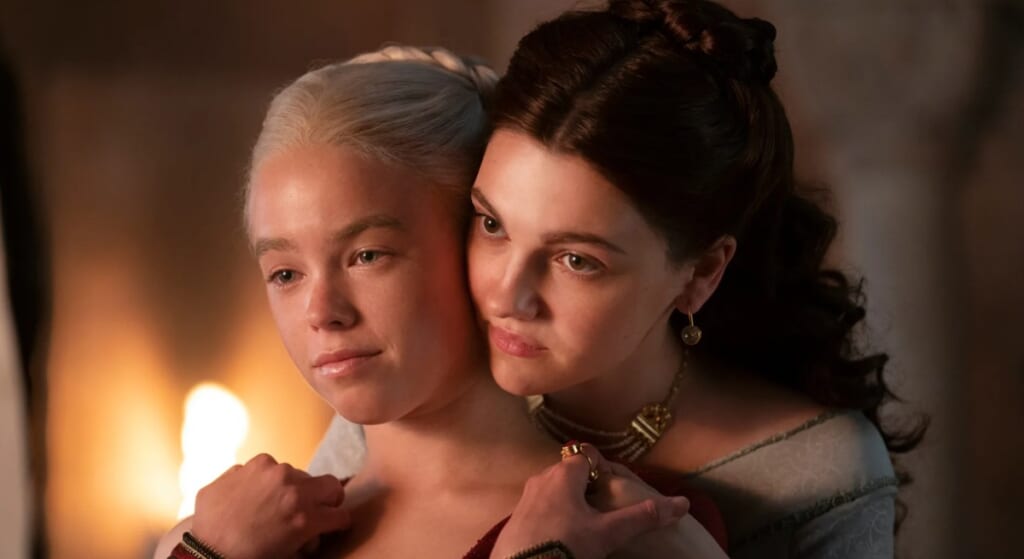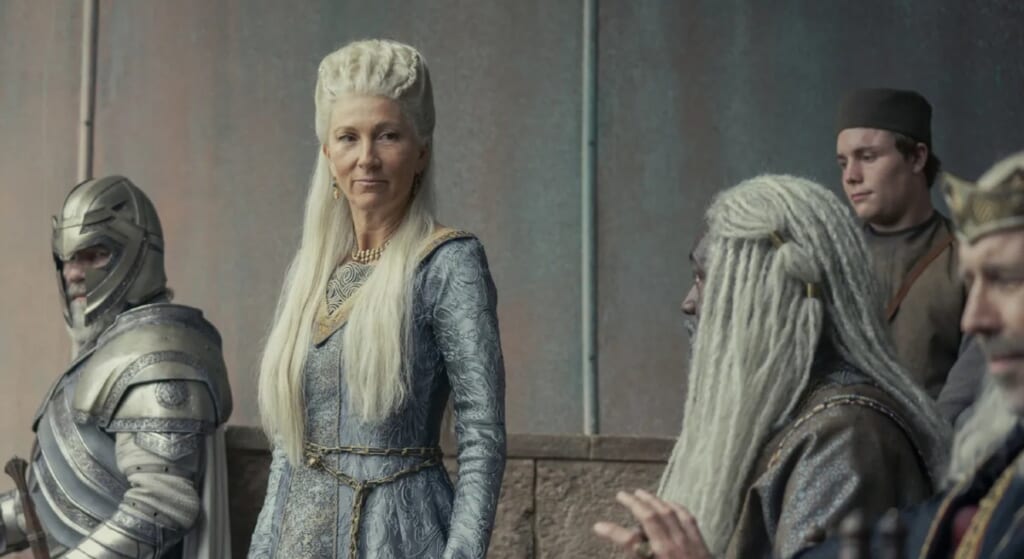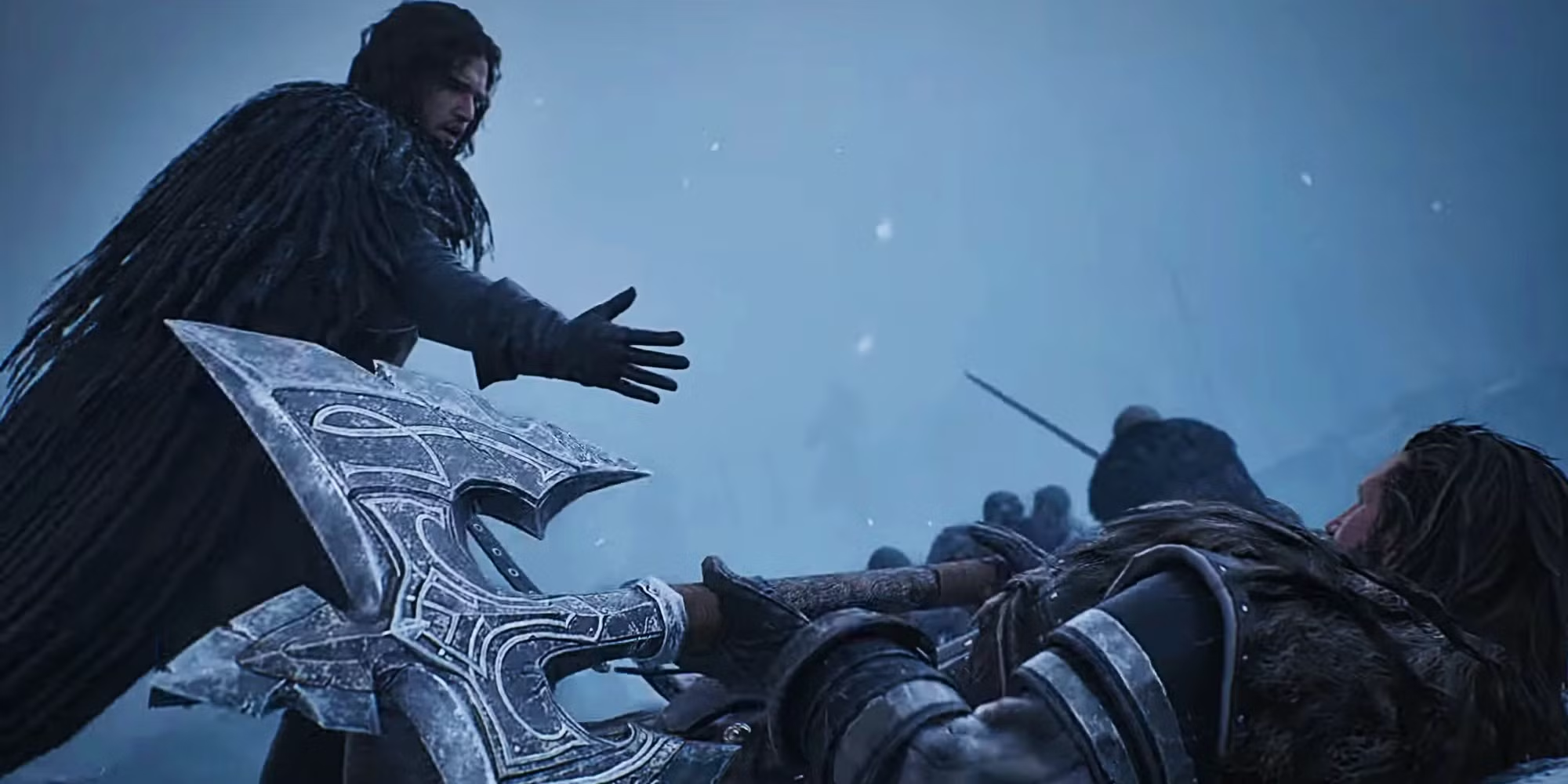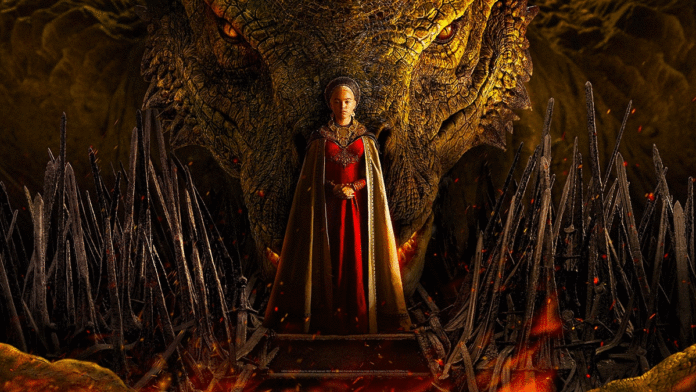HBO’s epic fantasy Game of Thrones was known for its gorgeous costumes, palace intrigue and brutal story, as well as a cavalier attitude toward sexploitation and the treatment of women. The new prequel series, House of the Dragon, based on George R.R. Martin’s Fire & Blood, appears ready to address the shortcomings of its predecessor.
Two episodes have been released so far, with nearly 10 million viewers tuning in for the premiere alone. So far, it appears as if producers understand what worked in Game of Thrones, and what didn’t. The palace intrigue, brutal storytelling, historical inspiration and fascinating character motives are back. However, this time the wigs are a bit cheaper, and the attitudes toward sexual violence are more thoughtfully considered. The opening sequence is different too: Instead of visiting mechanical representations of key locations in Westeros and beyond, the camera follows a thick river of blood through House Targaryen.
RELATED: 20 Game of Thrones Quotes That Will Give You Chills
Notably, there are also significant changes behind the scenes of House of the Dragon. Series creators Ryan J. Condal and George R.R. Martin are joined by a long list of directors and writers, among them names like Geeta Vasant Patel, Sara Hess, Charmaine De Grate and Eileen Shim. The number of women creatives already appears to make a difference in storytelling.
Rather than focusing on battles between rival families, House of the Dragon centers on royal succession, and the messy Targaryens, 172 years before the birth of Daenerys Targaryen. Although the series is removed from the events of Game of Thrones, viewers will likely recognize other family names. With the inclusion of dragons in the first two episodes, we can already see the way the series navigates history and fantasy is different from its predecessor. While, so far, audiences have been introduced to more male characters than female, the women are already the strongest characters. This story is about the violence against women that is inherent in a patriarchal system.
Note: Mild spoilers follow for House of the Dragon.
Roe v Wade and House of the Dragon
The tragedy in the pilot episode is especially poignant, given the recent overturning of Roe v Wade. King Viserys has a daughter with Queen Aemma, but is in need of a male heir. Pregnant again, Aemma is candid with Princess Rhaenyra about the dangers of childbirth. Rhaenyra is more interested in becoming a knight and hanging out with her bestie, Alicent Hightower. But when Rhaenyra visits her mother, Aemma reminds her what is expected.
“This is how we serve the realm as royal women,” Queen Aemma says. “Childbirth is our battlefield. We must learn to face it with a stiff lip.”
The birthing bed is a particularly bleak battlefield, with a 50-percent chance of survival. Aemma has already made several failed attempts at birthing a son, and this delivery doesn’t go well. In a particularly brutal scene, the physician proposes an “impossible choice” to Viserys in an effort to save his unborn son and heir.
Aemma is not the one who gets to choose what happens to her or the baby. Instead, she begs for her life as she’s held down while a procedure is performed against her will.
RELATED: Surviving Two Brain Hemorrhages Inspired Game of Thrones’ Emilia Clarke to Start This Charity for Young People
Before House of the Dragon‘s premiere, producers screened the scene for multiple women, and asked whether it was too violent. Unanimously, the answer was, “No, if anything it needs to be more.” The scene is grotesque, horribly realistic, and a glaring commentary on the importance of adequate medical care for pregnancies.
Martin stated previously the series isn’t excessively brutal or misogynistic, but, rather, historically accurate. It seems as if the producers agrees.
House of the Dragon’s Strong Women

There are far more male characters to date in the “Game of Dads,” and the vast majority of actors so white. But it’s the women who stand out most.
Some characters have strength due to their positions of power, and others due to their relationships. But some possess strength because they have agency over themselves or others.
RELATED: ‘The Mountain’ from Game of Thrones Finally Reached His Ultimate Goal and We’re Amazed by His Work Ethic
Queen Aemma’s role is brief, but it nevertheless sets the tone for the series. The primary protagonist, Princess Rhaenyra, demonstrates insight and straightforwardness. She is the only one who can reason with her rebellious uncle Daemon, the madman with a dragon. Much like her descendant, Daenerys Targaryen, Rhaenyra is decisive and passionate, and wants to reshape the world into a better place.
The daughter of the King’s Hand, Alicent Hightower’s role as family sweetheart and confidant places her in a position to remind both Rhaenyra and King Viserys about the value of honest conversation. Mysaria, shows some significant strength in her discussions with her lover, Prince Daemon. Rhaenyra’s aunt, Rhaenys, plays the role of wise woman. It’s her conversation with her niece in in Episode 2 that Rhaenyra to action.
“Here is the hard truth,” Rhaenys says in Episode 2. “Men would sooner put the realm to the torch than see a woman ascend the Iron Throne.”
Brutality and Diplomacy in House of the Dragon

House of the Dragon is setting up some fascinating storytelling about how to navigate brutality with complicated diplomacy. Targaryen rule all comes down to dragons: War is a distant memory, and dragons are real and spectacular. The king is a decent guy, but not a great head of state, and is reluctant to disturb the status quo.
His brother, meanwhile, is the polar opposite, and enjoys stirring the pot. Instead of downplaying or glorifying violence perpetrated on women by men, House of the Dragon observes less-obvious but insidious violence against women.
“Our female leads in the first half of the show are coerced and manipulated into doing the will of adult men,” Sara Hess, a writer and executive producer, told Vanity Fair. This is done not necessarily by those we would define as rapists or abusers, but often by generally well-meaning men who are unable to see that what they are doing is traumatic and oppressive, because the system that they all live in normalizes it.”




















![[Book Review] The Blade Itself (The First Law Trilogy) by Joe Abercrombie](https://bendthekneegot.com/wp-content/uploads/2018/01/1516047103_maxresdefault-218x150.jpg)


















